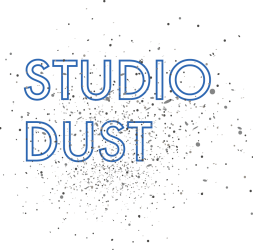>>> NEXT CHAPTER <<<PREVIOUS PAGE >TABLE OF CONTENTS<
3.2 CASE STUDIES
This research examined two case studies: the ‘Stadslab Luchtkwaliteit’ city lab and ‘Zero Footprint Campus’. What are the circumstances of these city labs?
INITIAL START OF THE LAB
–Stadslab Luchtkwaliteit:
Stadslab Luchtkwaliteit started organically. In 2014, the municipality of Rotterdam issued an open call to locals for ideas regarding the bad air quality in Rotterdam. Locals (experts, non-experts) started to share ideas and knowledge and decided to join forces because of a lack of response by the municipality after the open call. ‘Stadslab Luchtkwaliteit’ started as a city lab in order to catalyze a change and improve the ideas and designs.
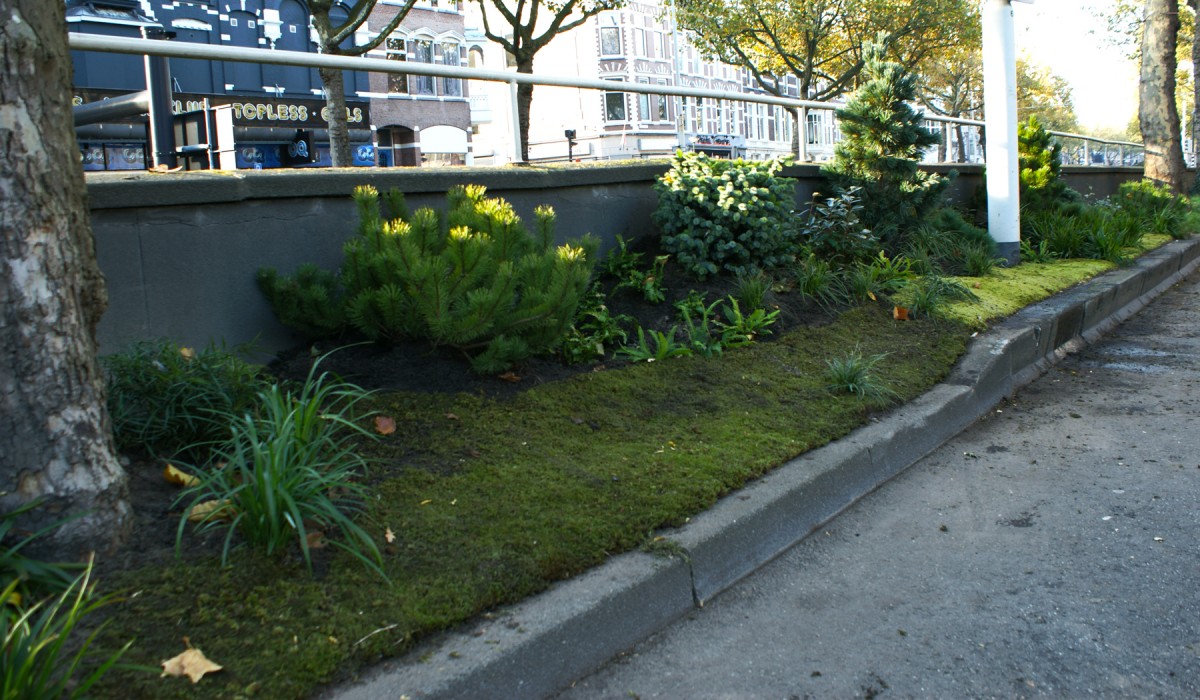 Ideas for improving the Air Quality vary in the Lab. For example, experimenting with the effects of plants and moss on Air Quality. Image Source: http://www.resilientrotterdam.nl/en/initiatieven/city-lab-for-clean-air/
Ideas for improving the Air Quality vary in the Lab. For example, experimenting with the effects of plants and moss on Air Quality. Image Source: http://www.resilientrotterdam.nl/en/initiatieven/city-lab-for-clean-air/
–Zero Footprint Campus:
After an initial, two-year cooperation with individual projects, Cynthia Hathaway (initiator of the lab and designer) and Melle Smets (initiator of the lab and artist), along with Utrecht University and its campus, decided to upscale. They invited other artists to realize artistic research at the campus and connect science to art.
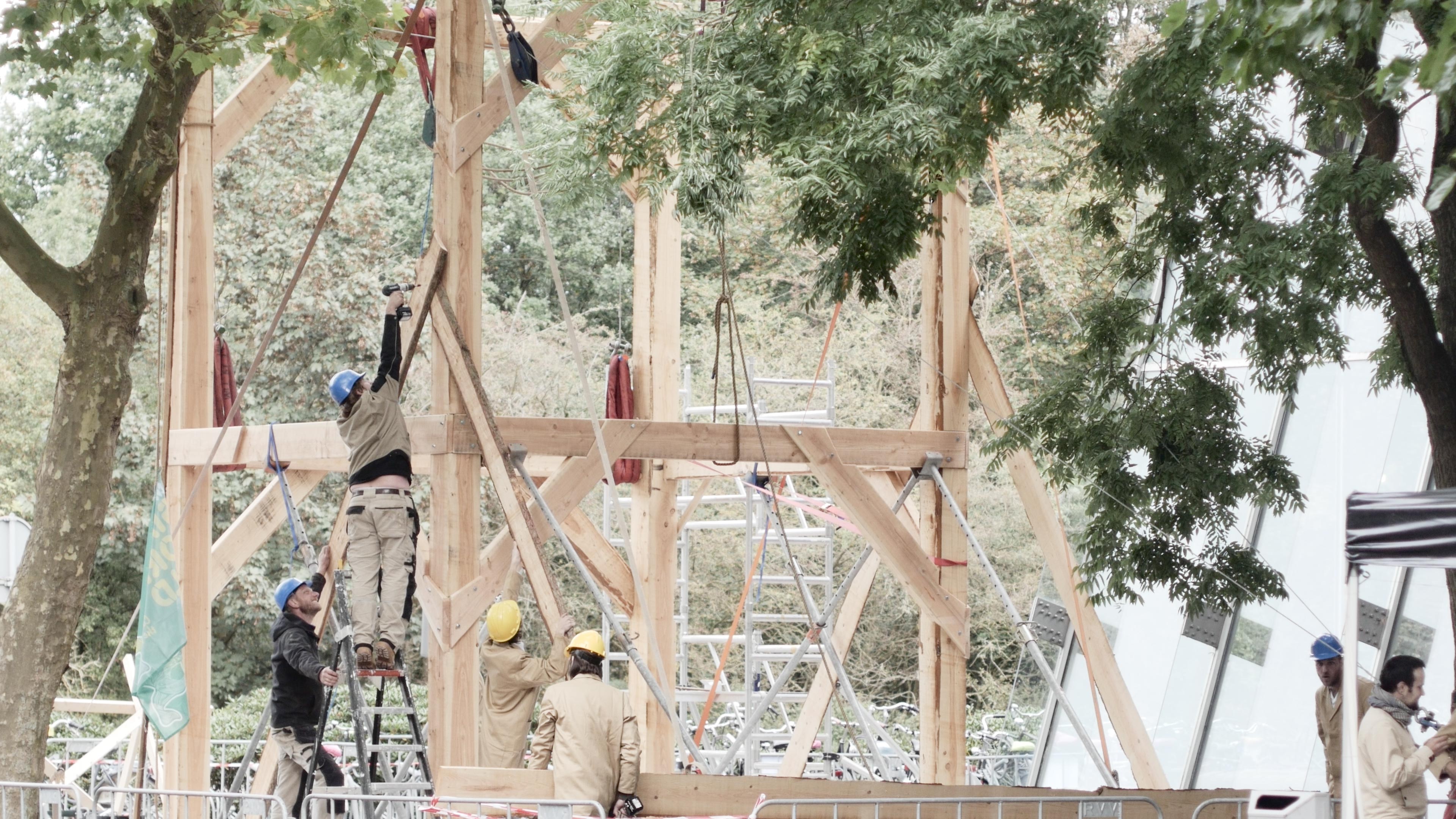 Start Zero Footprint Campus; Barn Raising 11 October 2016; Build up of the Department of Search-pavilion. Image source: http://www.zerofootprintcampus.nl/2016/10/14/paviljoen-department-of-search-is-gehesen/
Start Zero Footprint Campus; Barn Raising 11 October 2016; Build up of the Department of Search-pavilion. Image source: http://www.zerofootprintcampus.nl/2016/10/14/paviljoen-department-of-search-is-gehesen/
COOPERATION IN AND BEYOND THE LAB
Because of its unintentional character, Stadslab Luchtkwaliteit has engaged a wide variety of people who vary in age, educational background, and profession. This hybridity also has an impact on the network and cooperation with external partners. Kirsten Kentler (member of Stadslab Luchtkwaliteit, interaction designer and design educator) described the importance of a wide variety of people operating in the lab because it allows for different opinions and therefore also for critical questions that aren’t asked in a uniform expert environment. “The notion that we disagree with one another in the lab makes me question more. So I call the experts. But it is easier to connect to them and get an appointment with a bigger group of people.” (Kentler, 2017) Marieke de Keijzer (initiator Stadslab Luchtkwaliteit and landscape architect) described the lab as an independent context in which cooperation creates a canvas for reflection that can ask critical questions to the outside world. “I get the input from people and Internet. But this requires me to be trained, to be very critical. It bothers me that a lot of people hear and read stuff about dust, for example, and simply accept it as the truth.” (De Keijzer, 2017) They both described the value of a learning network.
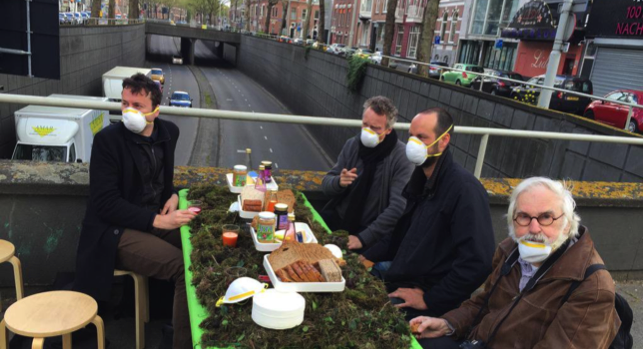 Lunch at a high traffic street in Rotterdam in order to discuss the impact of fine dust on our health. By situating projects in ‘the City’ it connects to various other citizens. photo Leon Richard Okt. 2015 source: https://www.stadslabluchtkwaliteit.nl/portfolio/fijn-stof-lunch/
Lunch at a high traffic street in Rotterdam in order to discuss the impact of fine dust on our health. By situating projects in ‘the City’ it connects to various other citizens. photo Leon Richard Okt. 2015 source: https://www.stadslabluchtkwaliteit.nl/portfolio/fijn-stof-lunch/
Zero Footprint Campus has a core of expert artists working together with expert scientists from the university. In this cooperative process, ‘the others’ are deliberately integrated. Cynthia Hathaway included, for instance, ‘others’ such as amateur felters in her project, ‘Sweat(er) Shop‘. In the project, a community of students, hobbyists, and academics felt a new university sweater with wool from local ‘campus’ sheep. She curates unconventional cooperation. She describes this process as a strategy to create ‘disruptive interventions’. She sets up the circumstances for co-operation and designs the process. This can’t be developed on a drawing table and it isn’t mouldable. It is action research, she explained, to put things into a ‘space of reality, daily life’, and to respond to the given feedback. This can only be done if you have taken the time to know the people and know your way around.

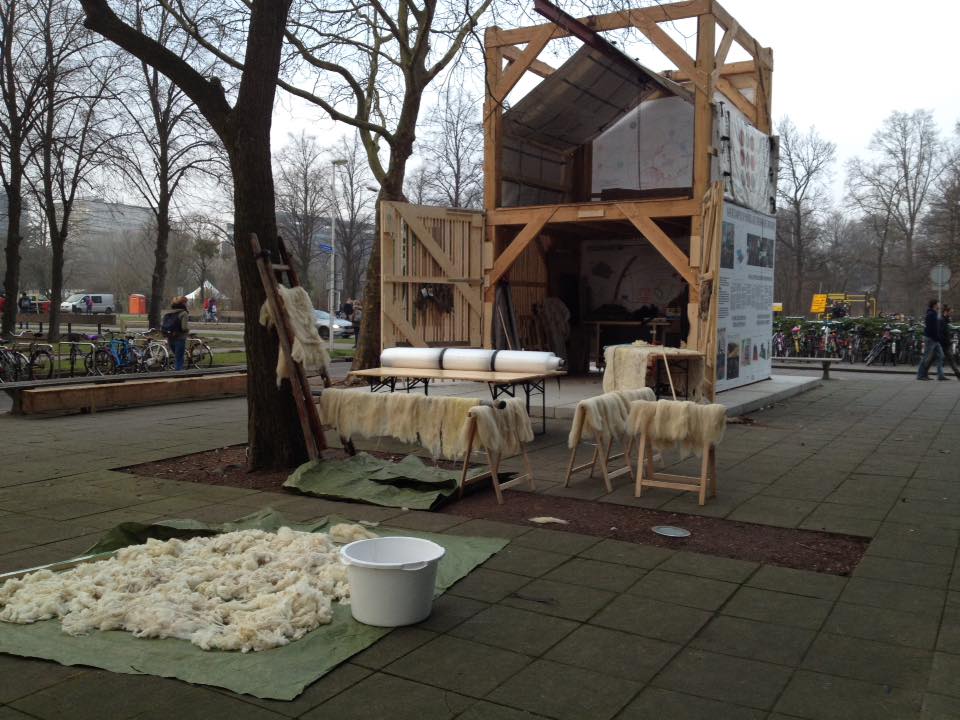
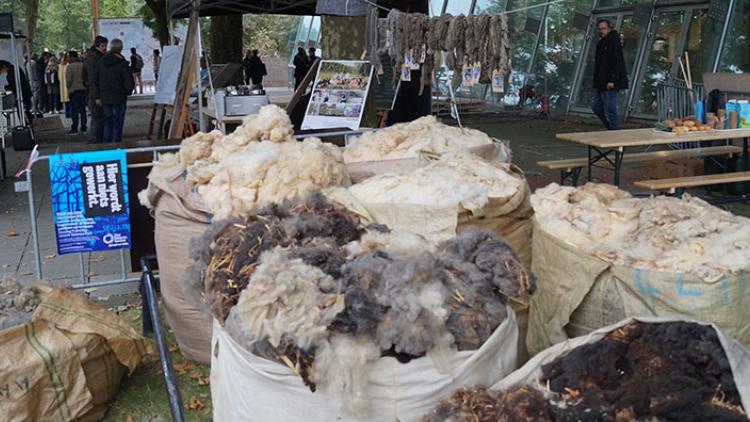
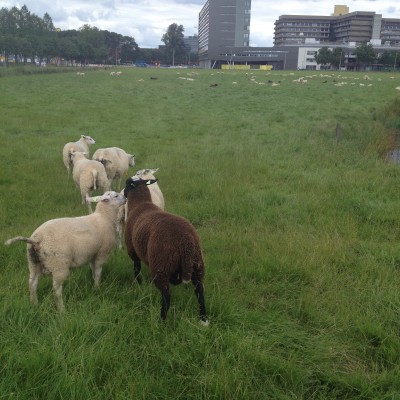
‘Sweat(er) Shop‘; project by Hathaway to felt a university Sweater from local sheep, with the academic community, hobbyist, and artists. source: zeroFootPrintCampus April 2016
COMMON PURPOSE IN THE LAB
The topic of Stadslab Luchtkwaliteit is very specific: air quality. This makes it possible to transcend various boundaries and differences. Marieke de Keijzer explained that simply having a common interest isn’t sufficient for creating solutions for bad air quality as it leaves too much space for only talking rather then acting. Getting to solutions require cooperation in various levels; talking, doing, reflecting etc. It requires being able to be specific as well as a generalist in order to develop this common interest into a fruitful cooperation. She explained that, because she is a landscape architect, she has a broad perspective and can therefore recognize commonalities as well as what can be gained from cooperation.
Zero Footprint Campus has a strong ecological vision. The initiators are very much aware of the importance of a commonality of purpose. Cynthia Hathaway ’united’ in quite a few projects using knowledge of amateurs to experts. This experience made her realize the importance of what she calls a ‘Commonality of Purpose’ and that it isn’t evident to find. There is a role for designers to play in allowing people to find this commonality. She explained that it requires understanding your role, and that you can be instrumental. And emphasized acknowledging the ‘hobbyist’ in the process, and that she sees her role as opening the façade of the expert to ‘the others’. She underlined the importance of the role of designers within cooperation’s.
Designers can also facilitate in materializing the common ground for people in order to find and discuss their common purpose. Guido Marsille (member of zero Footprint Campus and designer) is experimenting with ’Van Blankensteyn’ Soapmaker within the Zero Footprint Campus. I consider him a Pro-Am ‘chemist’. He is developing organic soap, including its factory, using local food waste as ingredients (see appendix). The project is developed together with students and scientists from the campus. He started the project by sharing his washing machine with others and creating a physical ‘washing’ space people could use, resulting in people talking to each other and finding common interests due to the materialized washing space.
NON-EXPERT ATTITUDE OF THE LAB
In the research, I discovered that both city labs use the notion of ‘being a non-expert’ as an attitude of the lab. Members of Stadslab Luchtkwaliteit have an open and critical curiosity. The lab questions instead of giving answers and therefore never claims to have THE solution. Because they are not purporting to have the answers, it creates an open space for expert air quality institutions to think differently; it opens up new possibilities, new knowledge, and new connections. Kirsten Kentler for example plays with insecurity. She understands that her naïve questions can be valuable for the experts, but she can only ask them if she is really informed herself. She said that kind of “insecurity is liberating but constraining at the same time” in a design process. But by being aware, it can be instrumental. “It is good to realize the importance of insecurity. … are my questions not naïve? After I gained a huge amount of knowledge, then I was able to ask these naïve questions again. … My role as a designer is to realize that these naïve questions have a huge value, and is an import attitude.” (Kentler, 2017)
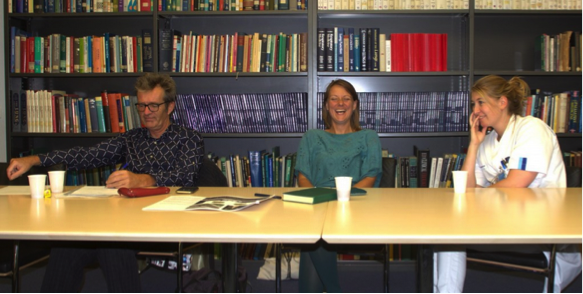 StadslabLuchtkwaliteit organized several ‘Expert’ Meetings about Fine Dust and invited both expert as well as non-experts. Meeting about ‘Measuring Fine Dust’ with amongst others experts on the topic like RIVM; Top image: ‘Fine Dust and the impact on our health’ at Erasmus Academic Hospital Lung Department including experts from various disciplines and non-experts.
StadslabLuchtkwaliteit organized several ‘Expert’ Meetings about Fine Dust and invited both expert as well as non-experts. Meeting about ‘Measuring Fine Dust’ with amongst others experts on the topic like RIVM; Top image: ‘Fine Dust and the impact on our health’ at Erasmus Academic Hospital Lung Department including experts from various disciplines and non-experts.
source: https://www.stadslabluchtkwaliteit.nl/portfolio/expert-bijeenkomst-erasmus-ziekenhuis/
The urgency of ecological issues demands a wider perspective to generate better questions and new knowledge. This needs to be provoked. Zero Footprint Campus is, for example, proposing the ‘this leads to nothing’ idea; this allows for ‘search’ rather then ‘re-search’. They very deliberately use the idea of generating ‘no result’, but ‘just doing something’, ‘working on nothing important’. This notion is used as a radical-design on all graphic elements for example at their website.
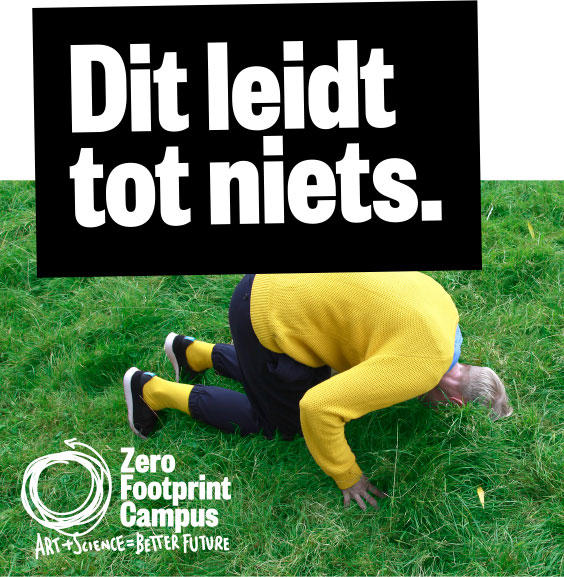
-website Zero Footprint Campus- source: http://www.zerofootprintcampus.nl/en/ April 2016
CONCLUSION
Both city labs provide insights into the circumstances of the city lab and can be an inspirational base for design education to understand how they could play a vital role in creating learning networks in co-creation with society. The following circumstances are important to consider: First he process is important and could be considered to be a product, as well. Second designers are able to guide the processes and unite people in finding their common purpose in order to cooperate; they play an important role in the lab. Third tangible topics create a common purpose and designer can materialize these topics. Lastly managing expectations in the lab (claiming to be a non-expert) is important, because it allows the outcomes to be beneficial, critically question, link unusual ‘suspects’, and therefore provide the setting for new knowledge creation.
>>> NEXT CHAPTER <<<PREVIOUS PAGE >TABLE OF CONTENTS<
